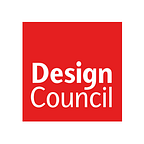What is biodesign? Combining nature and design
Imagine furniture that cleans the air, buildings that breathe with living walls, and plastics you plant after using them.
Anouska Anquetil, Senior Design Community Manager, Design Council
Biodesign can mean using organic materials or finding inspiration in nature. It can mean creating a relationship between living organisms and the design process or letting nature play an active role in shaping a final product. The natural world has powerful intelligence and adaptability that we can tap into to create sustainable and, in some cases, even self-repairing designs.
Elements of biodesign can be seen in a vast range of design areas, but we’ve broken down three key aspects to help you understand and apply its potential.
Materials
This is often the first thing that people think of when they hear biodesign. Strange and wonderful material applications that often feel like they belong to the future. Growing fungi and mycellium panels to build stages, colonising bacteria to create non-toxic dyes, or lab cultured meat which offers a more environmentally friendly alternative. Outlander Materials have made their UnPlastic from food industry by-products and beer waste, meaning it will never break down into micro or nanoplastics.
We now need to create scale so that biomaterials can become a regular part of our supply chain. Investment, policies that restrict harmful materials and work like WRAP’s push to supermarkets will all be key.
Natural processes
Biodesign is also harnessed when designers understand and mimic natural processes. Imagine buildings regulating temperatures through passive ventilation inspired by termite mounds, or concrete that acts with the same drainage properties as soil so that flooding doesn’t occur. By tapping into these solutions already developed by nature, biodesigners can adapt to solve the ever-growing challenges of the climate crisis.
Science in art
Beyond the practical, biodesign creates a mutual relationship between art and science. Living sculptures that naturally grow and develop over time, or bioluminescent clothing that paints fleeting stories when worn.
The bioluminescent dress shown above comes from a research project by designer Victoria Geaney, and University of Cambridge academics Anton Kan and Bernardo Pollak. They explore the unusual environments the bacteria could be cultivated in, and whilst the dress was the unintentional product, it has added to the voices challenging the definition of what art and science, and design and nature, could mean.
As with all design disciplines there are consequences that need to be considered.
Biodesign, naturally comes with ethical considerations. We are manipulating and engineering living organisms — this can raise questions of consent, ownership, even the consideration of the human ‘god complex’. In interacting with nature we must always approach it with caution and respect, ensuring that our designs are not just for human benefit, but work with the natural world they were engineered from.
Biodesign is a growing field (pardon the pun), and as with nature, it has an endless stream of opportunities and possibilities. It offers a glimpse of how our future cities, materials and lifestyles could be; a place where the boundaries between biology and design blur, and nature becomes our co-designer.
Further reading
Here are some biodesign examples from fashion, public art, interiors, architecture and systems that are incorporating biodesign.
Installations
- Bio-polymer Pavilion by Neri Oxman Aguahoja (oxman.com)
- Bio-engineered sculpture by Loop PH Arborescence | Loop.pH
- Bio-digital Algae purifying installations and external building curtains that absorb pollution/ create energy EcoLogicStudio Grows Air-Purifying Architecture with Algae (metropolismag.com) or Renewable energy from algae curtain (am.pictet)
Fashion
- Ganni – Bou Bag GANNI Bou Bag | An everyday icon designed with next-gen fabrics | GANNI UK
- Algi Knits yarns made from algae Keel Labs
- Bacterial Nanocellulose sneakers by Jen Keane Jen Keane — MA Material Futures or nat-2™ Fungi brown white (W/M/X) – coilex
- Fashion Tech and smart material designs by Anouk Wipprecht that combine smart fabrics and technology Bio — Anouk Wipprecht FashionTech
- Anya Hindmarch compostable bags Return To Nature | Biodegradable and Compostable Bags | Anya Hindmarch UK
- Pineapple Leather Pinatex™ | Royal College of Art (rca.ac.uk)
Interiors/ Architecture
- Growing Buildings: Mushroom Buildings? The Possibilities of Using Mycelium in Architecture | ArchDaily
- Mycellium furniture from Ligne Roset Ligne Roset Commits to Procure a Portion of Reishi™ Production Capacity - MycoWorks and wall panels Fumo - Mycelium Wall Panels – mycelium lab (fumopanels.com) or the Glastonbury pavilion although it was quite a limited example of mycelliums uses.
- Sensbiom Interactive solar responsive installations and panels Sensbiom II | Dezeen Events Guide which could be the future of sun responsive blinds
- Solidwool and bioresin chairs Shop — Solidwool
- Furniture made from upcycled eggshell, nut shells, coffee grinds, cacao grinds mixed with bio-polymers The Fabrick Lab by Elaine Ng Yan Ling or Shell Homage: bioplastic made from eggshells and nutshells - MaterialDistrict
Air quality
- Paints that absorb pollution Paint that eats pollution and heats homes | Science Features | Naked Scientists (thenakedscientists.com) or Air Purifying Paints - The Organic & Natural Paint Co (organicnaturalpaint.co.uk)
Systems design
- Using mycelium networks to map out logistical maps, city planning, hyper efficient routing etc Slime Mold Grows Network Just Like Tokyo Rail System | WIRED
